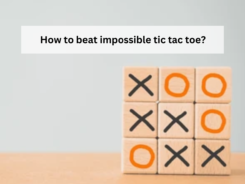For a website to keep performing well, the content must remain relevant over time, meaning it’s constantly relevant and evergreen.
This may appear troublesome at first, but it is easier than usually envisioned. Sometimes it is sufficient to keep up with updated information and revisit best SEO practices.
What is important to keep in mind here is that audiences change over time. That is important in two ways:
- New audiences may be interested in different topics than the old one.
- New audiences may be interested in older posts, which they haven’t seen.
Adding new content regularly is a must. It increases the visibility of a brand if nothing else. As for the second item, re-sharing older posts via social media platforms is a good idea.
As has been stated across the board, SEO is the key to long-term success, which means that every business goes through a transformation of sorts in the process of enhancing its online presence. The changes do not necessarily have to be dramatic; in most cases, they take into account the latest rules of the game, which almost universally translates into Google’s present guidelines.
1. Perform a Content Audit
Google algorithms change regularly, leaving many brands stressed in terms of novel search results. For some, it would appear that keywords and quality content don’t serve their purpose anymore, but they’d be wrong.
Quality content always matters. It is crucial to always give it your all when publishing content so that you establish your brand as an expert in the field. On its own, that means that visitors will keep revisiting your site because they won’t have to look elsewhere to get answers to their questions.
Still, some pieces are always better than the others, in multiple ways. Either it’s a poor word count or poor visualization, or it’s outdated information.
That’s where a content audit steps in. You’ll want to perform multiple actions to better the content on your website:
- Update irrelevant or otherwise underperforming content.
- Remove obsolete or otherwise spare content.
- Add additional relevant content to make up for the above-mentioned changes.
There are numerous ways to go about this, but if your website is voluminous, you’ll want to collect your content info into a spreadsheet. That will help you analyze the content and select the pieces to be either removed or updated. Think of your content as if it were your emails: leave your inbox unattended for a day, and chaos will ensue.
The easiest way to sort out your content is by exporting + all of your current content data from Google Analytics, as follows: Acquisition > Channels > Organic Search, then select Primary Dimension = Landing Page. The next step is Export > CSV. Just paste the target columns into Excel.
2. Identify Irrelevant and Underperforming Content
On top of the obvious SEO markers, such as are keywords and links, quality content should also correspond to search intent.
Albeit, this concept is extremely important, not many marketers are aware of its full potential. Many young brands are not even clear on what the term is, so let’s explain it in a nutshell.
Put, search intent answers to the why behind an online search. Why was the search performed? What is the person’s aim: shopping, learning or something else?
It is a known fact that Google strives to provide users with the most relevant results, and we know all too well that often vague queries are used. The ability to provide relevant answers is what has promoted Google into being the popular search engine it is today.
Following this logic, it is only natural to assume that if you want your site to appear on the first page of Google Search results, you must make certain it is the most relevant result for the target query.
Shortly put, there are four basic search intent types:
- Informational – provide direct answers to direct queries (e.g., “JFK International Airport directions” or “best accounting practices”)
- Transactional – provides links to shopping sites (e.g., “buy Samsung Galaxy s10” or “Book Depository coupon”)
- Navigational – provides specific web pages (e.g., “Twitter help” or “Sports Direct”)
- Investigative – provides answers on multiple products when the person looking for them hasn’t made the final decision on which one is the best for them (e.g., “best five-minute workout women” or “daily workout practice comparison”)
The last type is particularly important because the majority of people are often shopping around. Either they don’t have sufficient information about similar products or they are comparing prices.
It is, therefore, highly recommended to make certain that your content provides best query results because that will ensure its appearance on the first page of Google search results.
Content that is not SEO-optimized doesn’t correspond to search intent and is poorly written/outdated is irrelevant.
3. Fix Irrelevant Content
There are two choices: either remove it from the website or edit/rewrite it so that it becomes relevant. The choice depends on your criteria alone but also on common sense. Here are some guidelines:
- If the post is fairly good and has the correct search intent but it is somewhat outdated, the logical choice would be to edit it so that it includes updated information. For best results, also share it via your social media pages.
- If the search intent is incorrect but the post is relevant, it needs to be rewritten in a way that it will match the intent.
- If the post is poorly written but the search intent is correct, the article should be rewritten to enhance its quality while keeping the intent intact.
- If the post is irrelevant or outdated but cannot be updated with new info, it should be deleted from the webpage without much consideration.
Conclusion
As you can see, freshening up your content is a serious business and, as every serious matter, it needs to be premeditated and follow a clear strategy. It is always a good idea to keep things organized in a spreadsheet since the practice will simplify the same process in the future.
Yes, content should be revisited regularly and the more posts there is the more work for you. That’s why it is a good idea to keep a posting calendar and add remarks as you’re discovering issues. The good news is: once the search intent has been fixed, it will remain fixed for all eternity! So cheer up and write away!

















































































